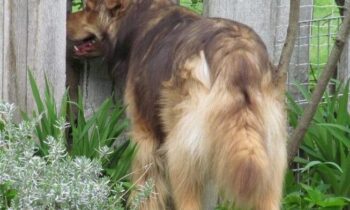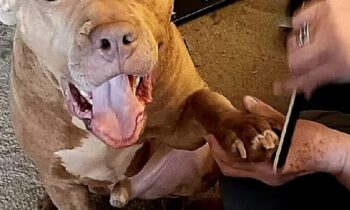
Most people who live with dogs have a list of what they don’t want the dogs to do: eliminate in the house, jump up on people or animals, steal food or destroy objects, bark too much, bite or hurt any human or animal for any reason, run away. What we don’t want dogs to do is an easy question to answer for most dog owners.
Many owners are discouraged by their dogs’ behavior. Some owners even think they may have to give the dog up, find it a new owner, turn it in to a shelter. These discouraged owners state specifically that their dogs are doing the very things on the “I don’t want my dog to . . . ” list. Their behavior has put these dogs in jeopardy of losing their homes and families. Veterinarians, trainers, groomers, rescue volunteers, and shelter staffers hear these stories every day.
In the past, training a dog was a matter of waiting until the dog did something wrong, then punishing him for it—hitting the puppy with a rolled-up newspaper when he had an “accident” indoors, for example.
It’s not that punitive methods worked well for all dogs and owners. The average human then just didn’t know any better. The only trained dogs they saw were in the military.
Now, we know better . . . and since we know better, we can do better.
Today, training is a matter of setting a dog up for success from the first moment that dog enters your life, as a puppy or as an adult. The only rolled-up newspaper you need to train your dog is the imaginary one you’ll hit yourself over the head with when you realize you forgot to take him out when it was time for him to eliminate!

Photo by Diane Kasperowicz
When discussing with owners what they think their dog is doing wrong, professionals who work with dog owners ask one simple question: What would you like your dog to do instead?
Housebreaking is a great example.
We all know what we want the dog to do instead of pottying in the “wrong” place: we want the dog to potty in the “right” place.
First, define what is “right.” Not just “outside,” but (more specifically) down the back steps, away from the patio, on the grass . . . under the big tree!
Excellent description. But you can’t read that to your dog. You’ve got to show him what you mean! How would you do that?
With a puppy, carry him to that spot on the grass under the tree the very first time he enters your house. (He’s almost certain to have to potty if he’s been riding in a car.) You might be very lucky and find he urinates immediately, at which point you praise him quietly, play with him if he wishes, or simply let him explore the yard. Whatever you think works best.
For the pup, the reward is the wonderful feeling of emptying his bladder!
▪ Continue to carry or encourage the puppy to that same spot every time you take him out, allowing him to be rewarded by that wonderful empty bladder.
▪ Crate him in the house except when you are certain he’s empty, setting the pup up for housebreaking success by making “accidents” almost impossible.
▪ Can’t carry the pup any longer? Don’t drag him on a leash. Entice him to that same spot. Head to it yourself while engaging him with a happy voice, a squeaky toy, clapping hands—whatever works!
There is no point whatsoever to “correcting” a puppy for eliminating in the house.
▪ You’re watching him do it? Pick him up and let him finish outside (aiming him carefully away from you), where you will praise him!
▪ You found it after it happened? No lectures! Hit yourself on the head with that imaginary rolled-up newspaper, and remember to pay closer attention when he’s not in his crate.
Jumping up on people?
Normal, outgoing doggy behavior—watch dogs who play together.
You don’t want your dog treating your visitors like she treats her doggy pals? You don’t want Fido knocking down your toddler? You don’t want FiFi jumping at Killer, the guard dog next door?
Jumping up on people or animals may not be safe or acceptable behavior.
What do you want your dog to do instead?
Sit.
You want your dog to sit instead of jumping up.
Running away?
Your dog got out an open door and she’s running down the block toward a very busy street where she could get hit by a car. You’re running after her, but she’s not even looking back at you.
What do you want your dog to do instead?
Come.
You want your dog to come when you call.
Notice what the “insteads” have in common? They are clearly defined behaviors that can be extremely rewarding to the dog.
I say “can be” because it all depends on you. It’s your job to figure out what’s likely to be most rewarding to your dog at any time, in any place (yes, it will vary) and to provide that reward, immediately and consistently, when he performs the behavior you’ve cued.
Do that, again and again—every time you call the dog, for example—and you stand a good chance your dog will start to offer eagerly exactly the behavior you want. It beats hitting him with a rolled-up newspaper, no?
When you look at what you don’t like about your dog’s behavior, consider the “insteads.” What do you want the dog to do instead? What could the dog be rewarded for doing? What behavior would be the right thing? How can you teach that behavior and make it fun for the dog?
Enrolling your puppy or dog in classes is the best way to get the guidance you need . . . if you find the right classes for you and for your dog.
It’s a must to visit classes—without your dog—before you enroll. Look for experienced instructors and assistants, positive training methods only, students and dogs enjoying the process. Walk away if punitive methods are used or suggested.



